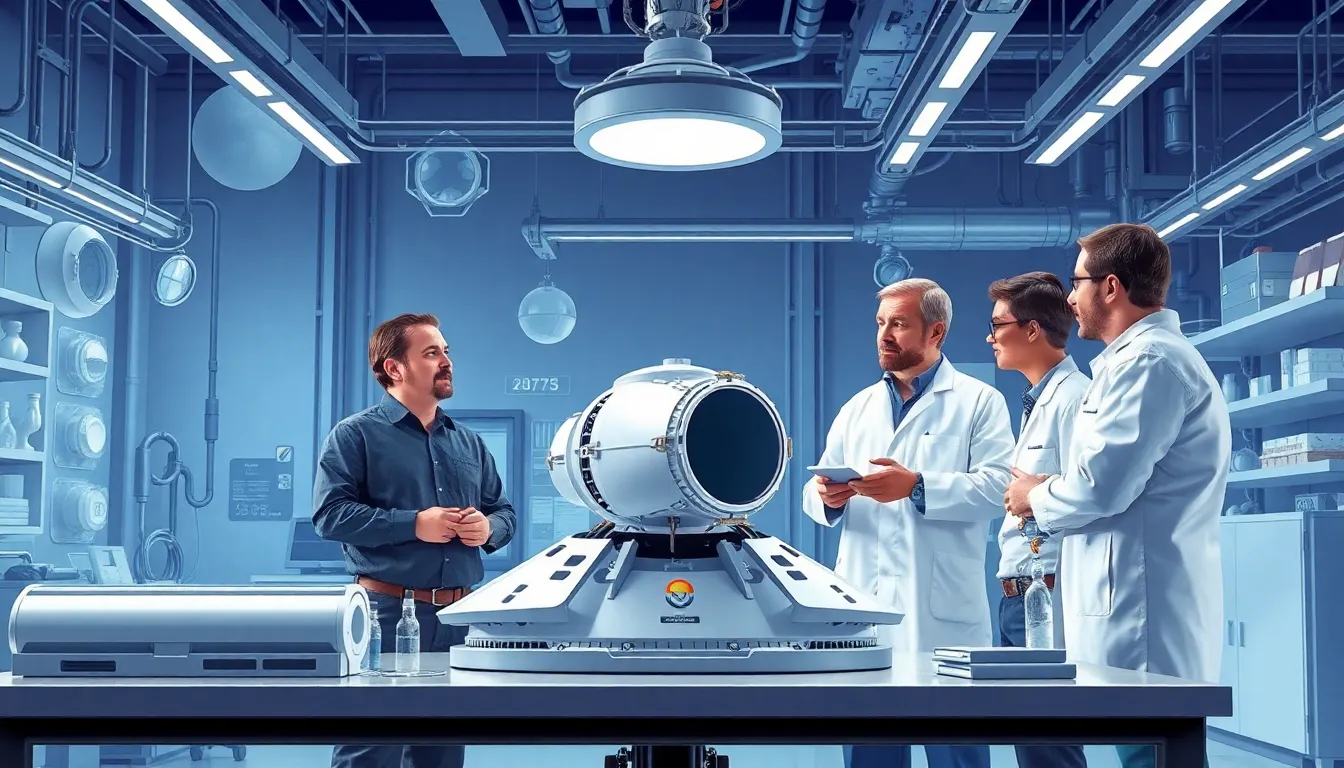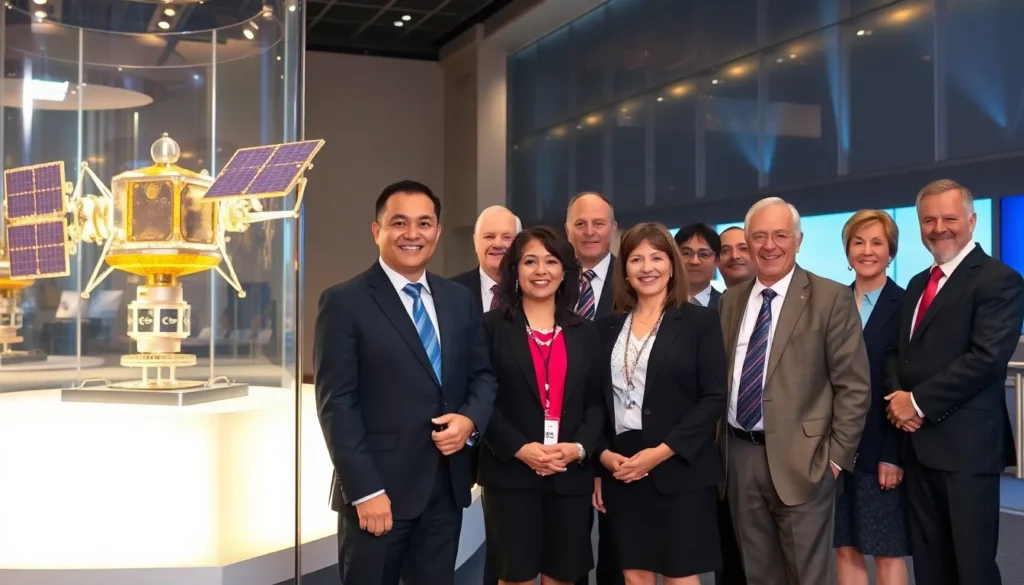In a world where smartphones are practically an extension of our hands, it’s easy to forget that we’re living in the age of space-age technology. From sleek satellites orbiting Earth to the fascinating robots exploring distant planets, this tech isn’t just for astronauts anymore. It’s woven into the fabric of everyday life, making tasks easier and more efficient—like ordering pizza with just a wink.
Table of Contents
ToggleOverview Of Space Age Technology
Space age technology encompasses innovations that emerged primarily during the mid-20th century. Key developments include satellite systems, rocket propulsion, and robotics. These technologies revolutionized fields ranging from communication to transportation.
Satellites enable global communications by providing essential infrastructure for services such as GPS and weather monitoring. They orbit the Earth, delivering data that impacts weather forecasts, navigation, and even entertainment. Innovations like satellite television exemplify how space technology enhances everyday life.
Rocket propulsion advancements support space exploration and commercial travel. Organizations like NASA and private firms have pioneered technologies that facilitate missions to Mars and beyond. Spacecraft equipped with cutting-edge engines exhibit efficiency and reliability, opening new pathways for exploration.
Robotics play a significant role in space missions. Robots assist in tasks that are dangerous or impossible for humans in harsh environments. Rovers like NASA’s Perseverance traverse planetary surfaces, conducting experiments and collecting samples, demonstrating how robotics extends human capabilities.
In addition, materials science significantly advanced during the space age. Research into lightweight, durable materials enhances everything from automobiles to smartphones. These materials, originally designed for spacecraft, find applications that improve everyday products.
The impact of space age technology extends beyond exploration. Medical advancements, such as imaging technologies and telemedicine, benefit from technologies developed for space missions. Innovations initially created for astronauts, like life support systems, enhance health care today.
As technology evolves, emerging fields such as artificial intelligence further integrate space innovations into daily routines. Space age technology continues to drive progress, making tasks easier and more efficient for everyone.
Key Innovations In Space Age Technology

Space age technology has transformed numerous sectors through various groundbreaking innovations.
Satellite Communications
Satellites facilitate global communication, providing connectivity across continents. They support applications like GPS, crucial for navigation systems in cars and smartphones. Weather forecasting relies heavily on satellite imagery, offering accurate data for predicting storms and managing natural disasters. These devices also aid in broadcasting television signals, linking millions of viewers worldwide. Notably, satellites enhance internet access, bridging gaps in remote areas and improving overall connectivity.
Space Exploration Vehicles
Space exploration vehicles have profoundly impacted our understanding of the universe. Rockets, such as SpaceX’s Falcon 9, revolutionized satellite deployment and cargo transport to the International Space Station. Rovers like Mars Curiosity and Perseverance explore distant planets, gathering vital information about extraterrestrial environments. Human-rated spacecraft, including NASA’s Orion, prepare for deep space missions aimed at lunar and Martian exploration. These advancements inspire future innovations and deepen humanity’s quest for knowledge beyond Earth.
Advanced Materials
Advanced materials play a significant role in enhancing various technologies. Innovations include lightweight composites and heat-resistant alloys, critical for aerospace applications. Spacecraft components benefit from these materials, ensuring durability and performance under extreme conditions. Additionally, breakthroughs in nanotechnology lead to stronger, lighter materials used in consumer products, promoting efficiency and longevity. The advancements in material science share a common goal: improving safety and functionality in both space and everyday life.
Impact On Everyday Life
Space age technology significantly transformed everyday life, making advanced solutions commonplace. Innovations developed for space missions enhance daily conveniences.
Consumer Electronics
Smartphones, equipped with GPS and satellite technology, enable real-time communication. Streaming services rely on satellite data and servers, delivering high-quality media instantly. Wearable devices also integrate space technology, offering health monitoring and data collection. Wireless charging systems often originated from developments in space power technologies. Innovations in display technologies improve everything from televisions to computer screens, borrowing from space research applications.
Transportation Advancements
Current transportation systems benefit from satellite navigation, reducing travel times and improving safety. Advanced weather forecasting, powered by satellites, optimizes travel planning for airlines. Electric and autonomous vehicles incorporate technologies refined for space exploration, enhancing efficiency. High-speed trains leverage materials science innovations to create lightweight, durable cars. Furthermore, SpaceX’s reusable rocket designs influence concepts for sustainable air travel, advancing the transportation industry.
Future Of Space Age Technology
Emerging trends signal exciting advancements in space age technology. Artificial intelligence stands out as a crucial component, influencing various sectors by enhancing efficiency and decision-making. Robotics continue to evolve, becoming more autonomous and effective in both space exploration and everyday applications.
Innovative materials science plays a pivotal role in shaping future products. Lightweight composites decrease the weight of vehicles, improving fuel efficiency in transportation. Heat-resistant alloys contribute to safety and performance in aerospace applications, while also being used in consumer electronics.
Commercial space travel is poised for growth. Companies like SpaceX and Blue Origin focus on reusable rocket technology, reducing costs and making space travel more accessible. As accessibility increases, the potential for space tourism and research ventures heightens.
Satellite technology continues to enhance global communication. Through advanced satellite systems, more efficient data transmission becomes possible, enabling innovations in telecommunication and broadcasting. Enhanced GPS systems improve navigation precision, fostering progress in logistics and transportation.
Telemedicine benefits from space age advancements as well. Utilizing technologies developed for space missions, healthcare access improves, particularly in remote areas. Patients experience better diagnostics and treatments due to these innovative solutions.
Emerging fields combine seamlessly with space solutions. Energy technologies focus on harnessing solar power from space, leading to cleaner and more abundant energy sources. Developments in quantum computing show promise for processing complex data, benefiting scientific research and everyday applications.
All these innovations indicate a bright future for space age technology, laying the groundwork for a new era of accessibility, safety, and efficiency across multiple sectors. Progress in space age disciplines influences numerous aspects of life, ultimately promoting an interconnected, advanced society.
Space age technology has transformed the way people live and interact with the world. Its influence is evident in everyday conveniences and advanced solutions that enhance quality of life. As innovations continue to evolve, the integration of artificial intelligence and robotics will further streamline daily tasks and improve efficiency across various sectors.
The trajectory of space technology points towards an exciting future. With advancements in commercial space travel and enhanced satellite systems, global connectivity and exploration will only expand. The ongoing development of innovative materials and telemedicine solutions will continue to make significant impacts on health and safety.
Ultimately, the legacy of space age technology is one of accessibility and progress, shaping a more connected and efficient society for everyone.




